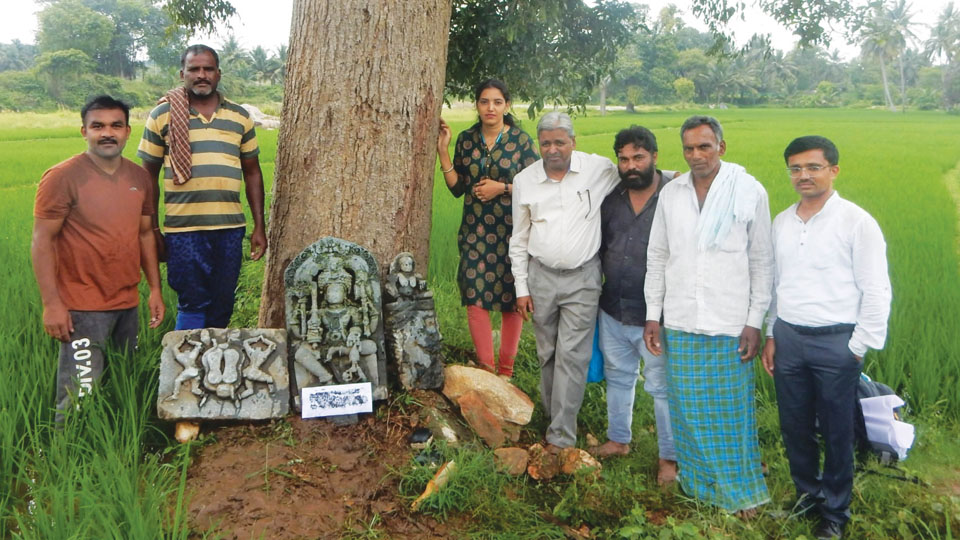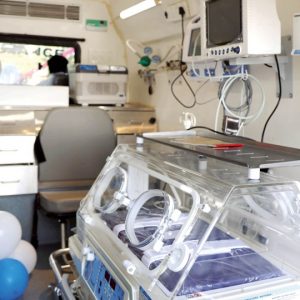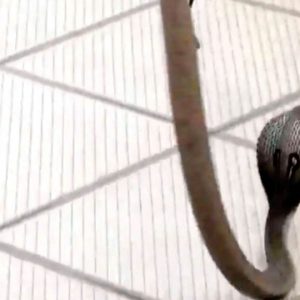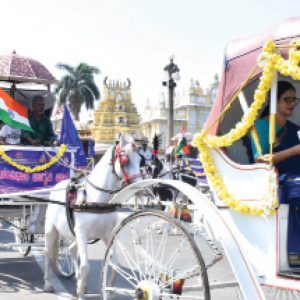Mysore/Mysuru: A unique and previously undiscovered hero stone inscriptions and sculptures from the Hoysala period have been unearthed at Mandya by a team from the Centre of Excellence for Studies in Classical Kannada (CESCK) of the Central Institute of Indian Languages (CIIL), Mysuru.
The hero stone inscription was located in Ragimuddenahalli, a small hamlet situated in Pandavapura taluk, Chinakurali hobli, Mandya district, close to Brundavana Katte in the Southern part, adjacent to one Mahadevappa’s agricultural land.
The team successfully identified several 12th and 13th-century Hoysala period soapstone sculptures and inscriptions, including the Aasithaanga Bhinava, Aathmabali sculpture, Saptamatrika sculptural panel, Bhairavi’s sculptural panel and a rare Yogini sculpture of Yaakini.
Dr. C.A. Shashidhara, a Senior Researcher at CESCK, led the research team and this remarkable discovery was made possible through academic collaboration with Dr. Shailendra Mohan, the Director of CIIL. Noted archaeologist and heritage expert Prof. N.S. Rangaraju and CESCK Project Director N.M. Talavar provided the initial information that led to this discovery.

The team also included Dr. N.S. Annapurna, Junior Researcher Dr. A.P. Rakshith, Office Assistant Shashikumar, with the assistance of the landowner Mahadevappa and leader Shivanna, who joined in the effort to excavate and document the partially buried sculptures and inscriptions.
The land (Survey No.26) belongs to Mahadevappa from Dinka village. Notably, important information is engraved on the pedestal of the Bhairava sculpture, featuring a significant Hoysala period sculpture known as “Yerjobaichoja,” inscribed in the Hoysala period’s Kannada language.
Deciphering inspirations
Within the demolished Eshwara Temple in a grass field of the same village (survey no. 24), a sculptural panel of Saptamatrikas has been discovered, featuring the name of a male deity.
The inscription reads as follows: “Shri Veerabhadra, Shri Bhrama, Shri Mahadeva, Shri Savikra (gi)ka, Shri Vasudeva, Shri Varaha, Shri Indra, Chavudeshwarim, Benaka. Additionally, the name “Baichoja” is engraved in another part of the sculpture.
Furthermore, various sculptures within the ruined Eshwara Temple also bear the name “Baichoja.” It reads: Rupu Ulidva, Ru Hara, Maka, La, Ivaru, Vinaya, Ka Veera, Bhadra, Gandu. In the centre of Brundavana village, Bhairavi sculptures can be found, although some researchers have mistaken them for Saptamatrika’s sculptures.
The inscription on the Bhairavi sculptures reads as follows: “Erjojana Maga, Ga Baichoja Ma, Dida Mari, Yana (ve) Maga, Madigon, Dana Maga, Sindagowda, Madisida.” It is revealed that Bhairavis and Saptamatrika’s sculptures were crafted by Baichoja. The pedestals of the Bhairavi sculptures also feature inscriptions with the names Erjoja and Baichoja, combined as “erjobaichoja.
Information about father and son
Similarly, on the pedestals of the Bhairavi sculptures, inscriptions of “Erjojana maga Baichoja” provide information about the father and the son. These inscriptions shed light on the place names during the 12th and 13th centuries in the Hoysala period, including Mudalahalli, which evolved into Ragimuddenahalli and Dinka.
Importantly, they indicate that this location was a Shaiva religious centre, as evidenced by the remains of a Hoysala period Shiva Temple with Nandi, Shivalinga, Bhairava and Saptamatrika sculptures.
Dr. S. Nagarajappa from the Archaeological Survey of India, Epigraphy Department in Mysuru, thoroughly examined and analysed these inscriptions. Local residents also played a crucial role in unearthing the sculptures and obtaining impressions of the inscriptions, including local Gram Panchayat Member D.M. Rajappa, R.M. Basavaraju, Kumara, Dharmendra and Ramesh from Pandavapura.
CIIL Assistant Director (Administration Officer) Pankaj Dwivedi and Dr. L.R. Prem Kumar, Head of the Classical Languages at CIIL, facilitated and supported this significant discovery.








Recent Comments